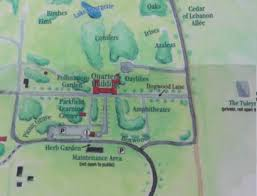It is January. The green of the holiday season is drying and fading. We await the arrival of the spring gardening catalogues (though some may have sneaked in with the holiday mail) that will offer tempting new varieties of vegetables and flowers for our garden. While we wait on the weather to direct our outdoor digging, what can we do? The following offers some reading, garden-site visiting, and planting suggestions for the gardener and for others who just enjoy a well-planned garden.
First, one can, if one has not, get the most uninspiring but perhaps most plant saving chore out of the way – cleaning and sharpening tools and cleaning and organizing plant containers. Prior to the next snow, put down your organic fertilizers. The snow aids in the breakdown of matter and the absorption of nutrients into the soil.
During this month, predictably, a few cold, snowy, miserable gray days must be endured. Be prepared by arming yourself with a couple of good books related to gardening. Andrea Wulf’s Founding Gardeners: the Revolutionary Generation, Nature, and the Shaping of the American Nation[i] and Justin Martin’s Genius of Place: The Life of Frederick Law Olmsted[ii] are suggested readings.
Wulf describes George Washington, John Adams, Thomas Jefferson and James Madison as men who saw their gardens and landscaping a place for agriculture experimentation, for philosophical expression for our nation, and for inspirational space in which to solve the problems of the day. The gardening reader will understand the frustrations of and the inspirations for our founding fathers. Reading Wulf’s well documented book (there are 100 pages of notes and bibliography) will also enhance your next visit to the historic gardens of Mt. Vernon, Peacefield, Monticello, and Montpelier.
Martin’s biography of Frederick Law Olmsted brings this talented man in from the periphery of his accomplishments: Chicago World’s Fair, urban planning and environmental activism, antebellum South commentator, Civil War organizer of military support systems, and designer of New York’s Central Park – his signature work. Olmsted was blessed with talent for organization and a painter’s eye. The scope of the vision required to create and to maintain Central Park is beyond the normal horizontal, one dimensional views. Some of Olmsted’s ideas for public and private spaces can be adopted into our own private garden space. In this biography, the gardener can gain an appreciation that environmental issues were as relevant over 150 years ago as they are today.
Man has always sought agriculture solutions, even the hunter-gatherer, to feed their society. In Charles C. Mann’s study of the Americas before 1491, he offers an observation about one’s relationship to the garden that gives timelessness to our 21st century garden efforts. The founding fathers and Olmsted would agree with Mann’s observation:
Gardens are fashioned for many purposes with many different tools, but all are collaborations with natural forces. Rarely do their makers claim to be restoring or rebuilding anything from the past: and they are never in full control of the results. Instead, using the best tools they have and all the knowledge that they can gather, they work to create future environments.[iii]
Working to create our future environment, unhurriedly, we might use our January time to review our own planting arrangements. One way to seek something new is to walk through Liberty Park (at Wolfe and Rte. 11), the Edith J. Carrier Arboretum, and the ISAT-area gardens for ideas about plant varieties and complementary plantings. Also, as you saunter, stop in your walk long enough and observe the shape of the “bare-boned” deciduous trees and shrubs in a winter environment. These garden walks might provide inspiration for considering native or heirloom plants in your garden.
A couple of good places to start exploring these plant types are at the website for Afton Mountain Edibles that offers native fruits in zones 6 and 7 (www.ediblelandscaping.com) and the www.SouthernExposureSeeds.com website that offers a wide variety of plant items. If you want to try native species suitable for your location explore the Virginia native plants website at www.vnps.org. Also, the Blandy Experimental Farm is located within the State Arboretum of Virginia in Boyce, about an hour away via interstate 81 and Rt. 340. Open every day of the year, their website, www.blandy.virginia.edu, provides the following description:
The 172 acre Orland E. White Arboretum was designated the State Arboretum of Virginia in 1986. With over 5000 living trees, the diverse collection is highlighted by over 200 kinds of conifers, 162 types of boxwood, a 300 tree ginkgo grove, a cedar of Lebanon allee, an herb garden, and the Virginia Native Plant Trail.
In January, the gardener does not have to be completely removed from the dirt. Give house plants a soap and water bath to clean off winter dust and check for bugs – which one can attack any of these pesky problems by adding a little cayenne to the bath water. While we cannot do in-the-ground outdoor gardening, a few things can be done now for colorful gardens in the months ahead. For February blooms, start forcing bulbs in a semi-shaded cool spot for a week then move to sunny window. If you have the space, sow ageratum and snapdragon seeds and root geraniums from cuttings. Ever considered a bonsai? Perhaps a little of the exotic– buy an orchid and pretend you are somewhere sunny and warm.[iv] Happy new garden.



No comments:
Post a Comment